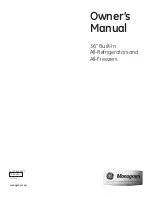
4 | Safety Precautions
Controlled Rate Freezer
death. Use of oxygen monitoring equipment is strongly
recommended.
Note:
The cloudy vapor that appears when liquid nitrogen is
exposed to the air is condensed moisture; not the gas itself.
The issuing gas is invisible.
Never dispose of liquid nitrogen in confined areas or places
where others may enter. Disposal of liquid nitrogen should be
done outdoors in a safe place. Pour the liquid slowly on gravel
or bare earth where it can evaporate without causing
damage. Do not pour the liquid on pavement.
First Aid
If a person seems to become dizzy or loses consciousness
while working with liquid nitrogen, move to a well-ventilated
area immediately. If breathing has stopped, apply artificial
respiration. If breathing is difficult, give oxygen. Call a
physician. Keep warm and at rest.
If exposed to liquid or cold gas, restore tissue to normal body
temperature (98.6°F) as rapidly as possible, followed by
protection of the injured tissue from further damage and
infection.
Remove or loosen clothing that may constrict blood
circulation to the frozen area. Call a physician. Rapid warming
of the affected part is best achieved by using water at 108°F.
Under no circumstance should the water be over 112°F, nor
should the frozen part be rubbed either before or after
rewarming.











































